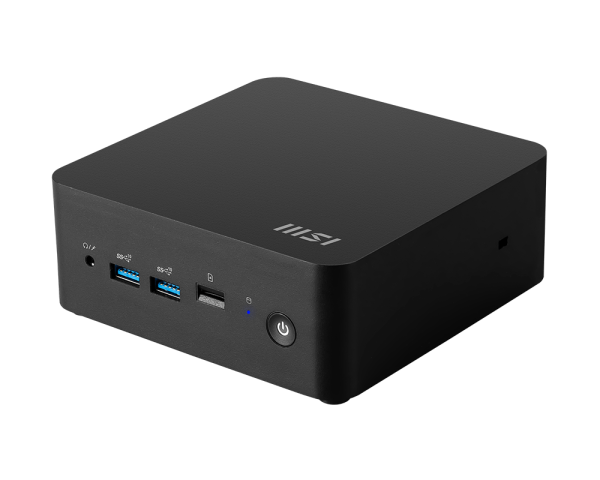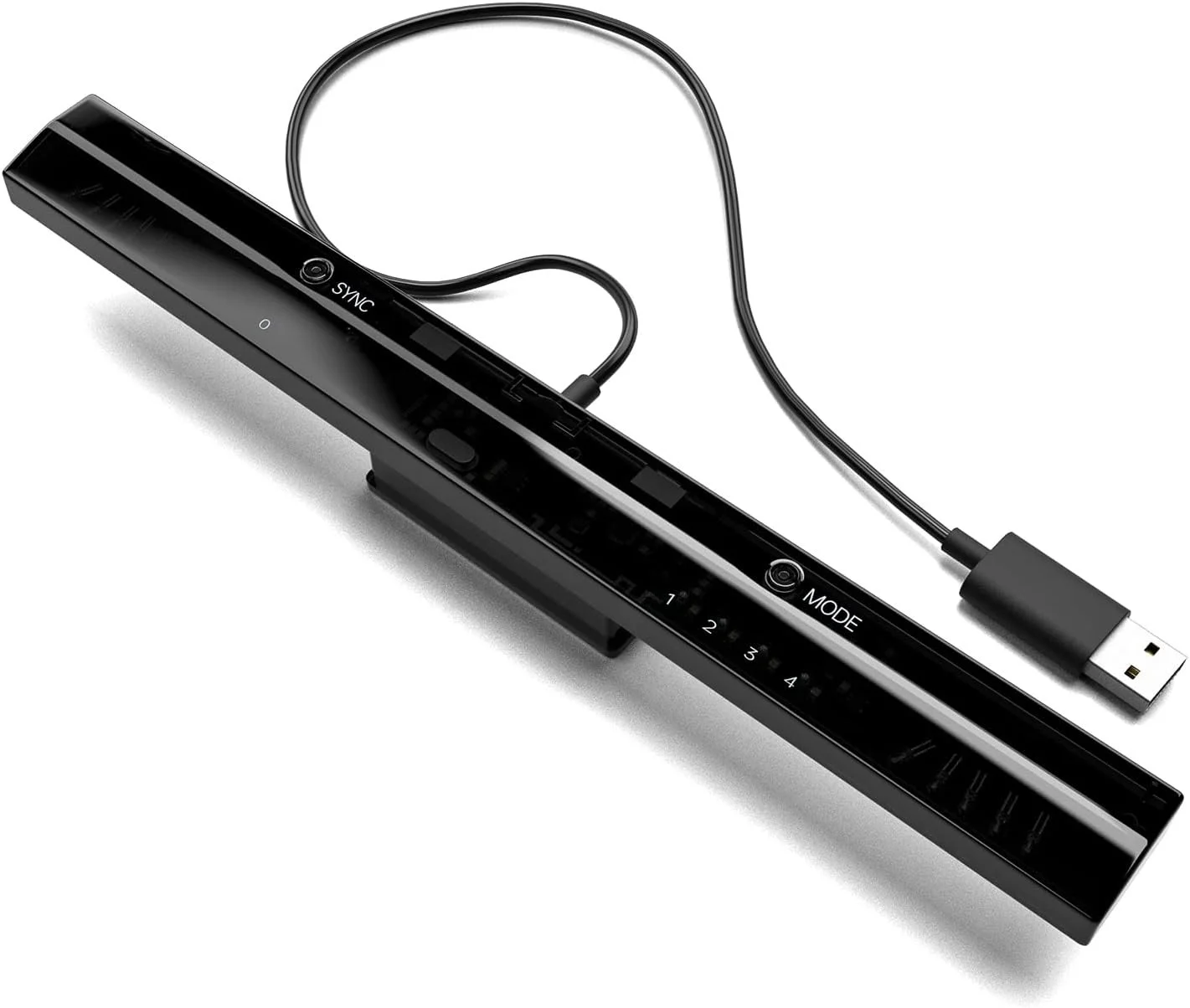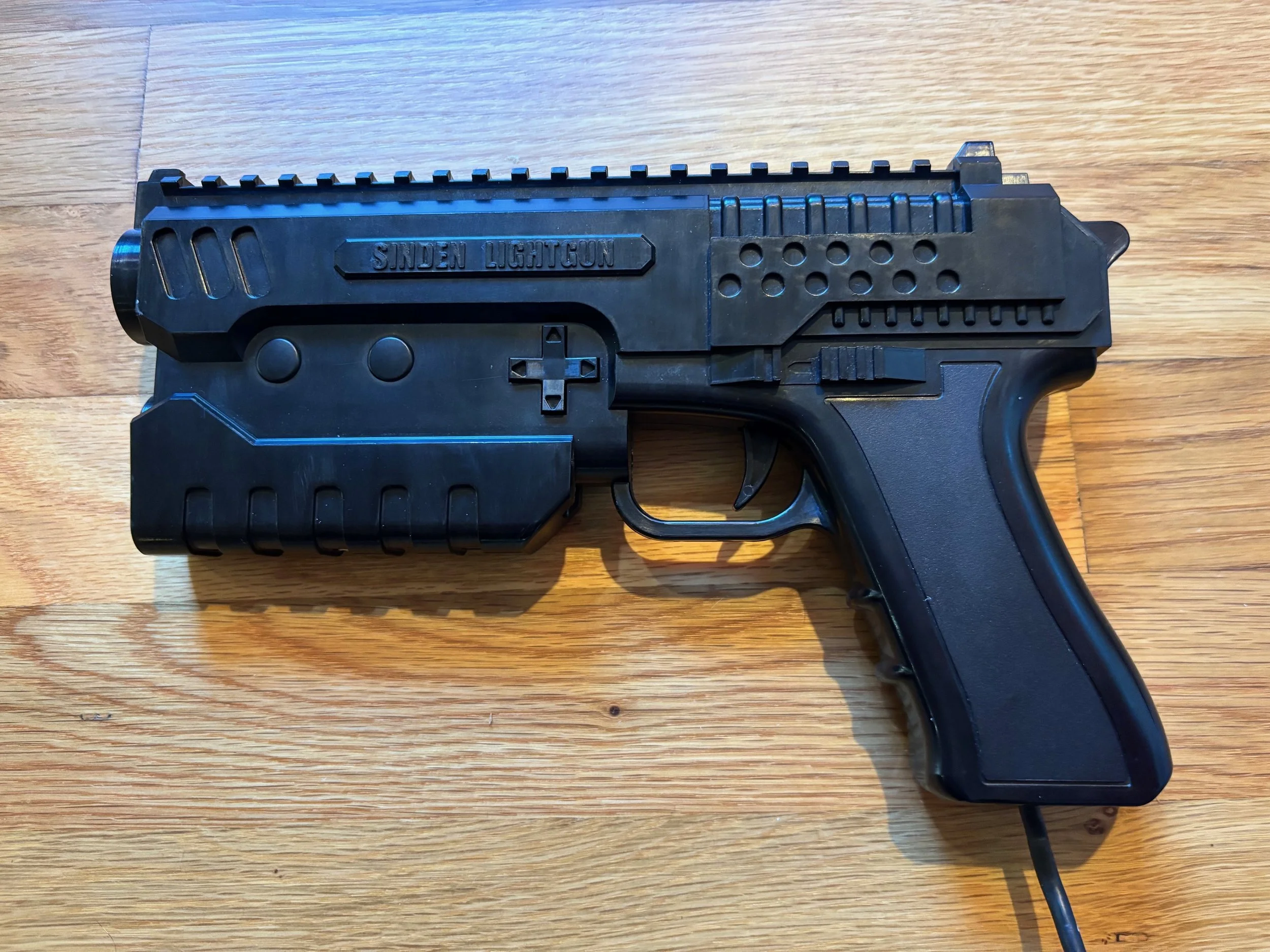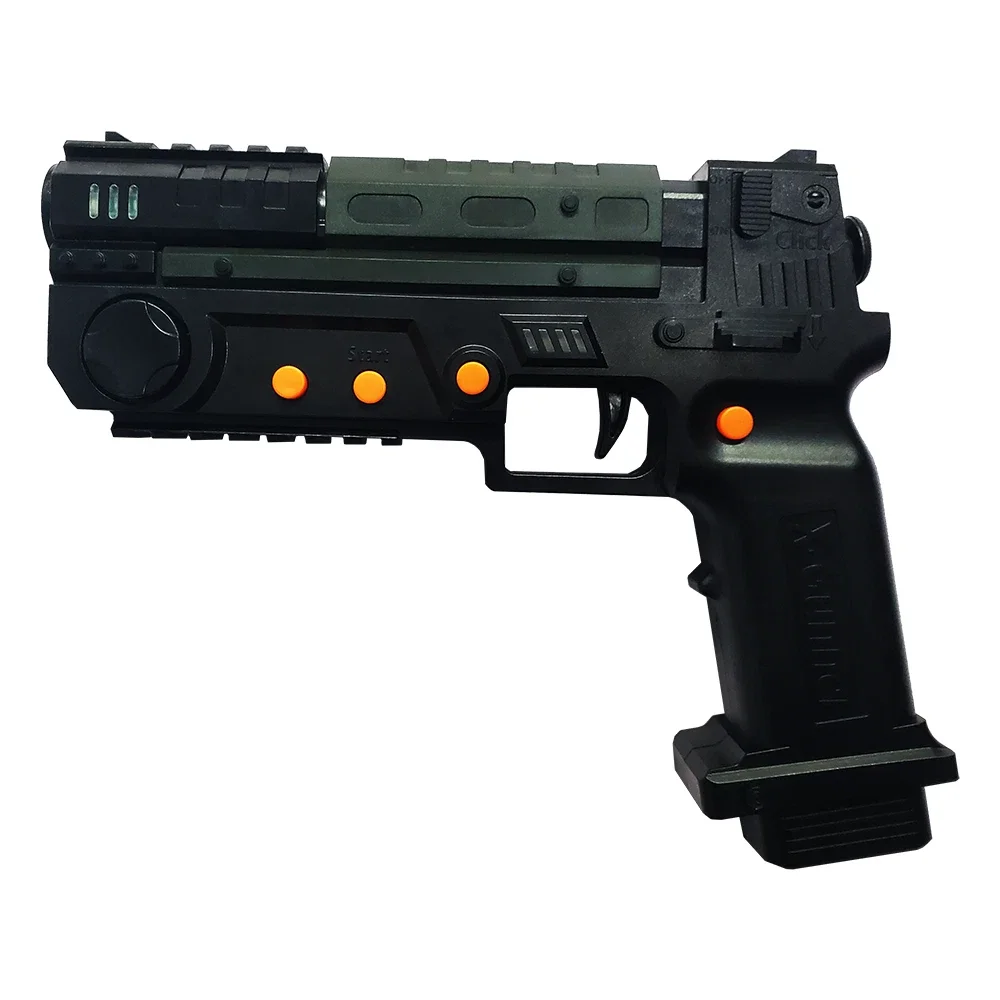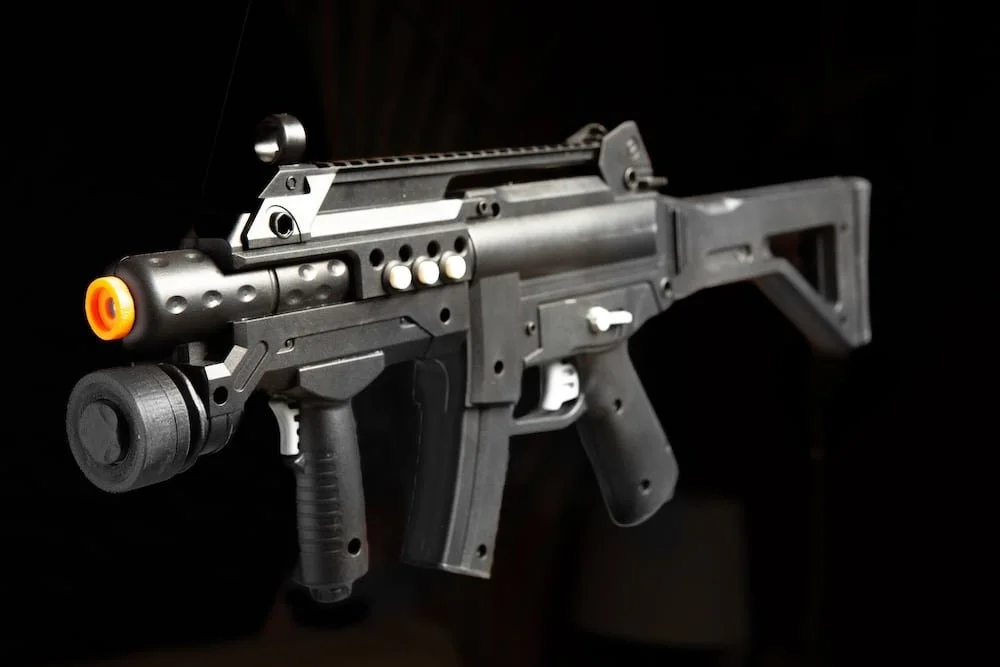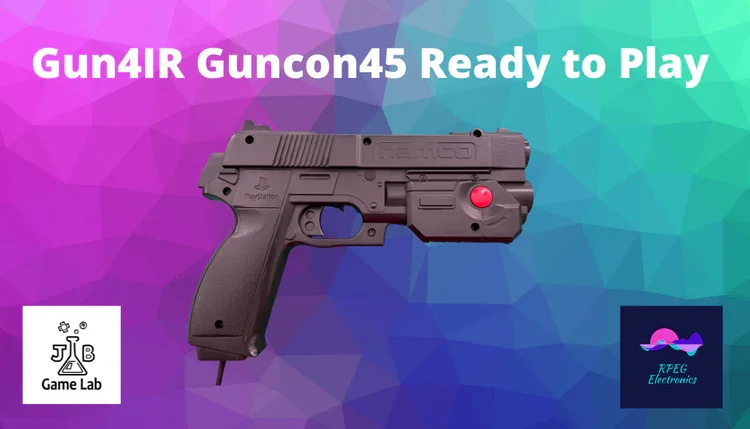Beginner’s Guide to PC Light Gun Hardware in 2025
So many choices.
By now, most gamers know that going back to play your favorite old light gun games on the older consoles is much more complicated nowadays, since the games were built to be running on original hardware and a CRT tube TV, which most people besides retro game enthusiasts don’t really have in their homes anymore. While there are a few modern solutions to play the old games on the original hardware with modern displays, they’re only available for a few of the consoles at the moment, but with the cost of retro game consoles and games getting prohibitively expensive nowadays, many people are wanting to play light gun games with their PC.
Many fans of light gun games have recently asked me things like “Where do I even start? What kind of hardware and software is needed? Which is the best gun option for me?” in regards to playing these games on their modern PC setups. I plan to help answer as many of these questions as I can with this article, using all the knowledge and hardware I’ve owned and used over the years, and give the pros and cons for each option.
A pretty standard mini PC, these come in tons of different configurations.
In addition to being able to play the older games, PC light guns also afford us the opportunity to play modern light gun games that are being made by modern developers for the PC platform as well as emulate some of the modern arcade light gun games from the last 10 years or so, so PC light guns open up a whole new world of games to play aside from emulation of the classics.
As far as the question of what non-gun hardware you need, you’ll need to figure out exactly what you want to be playing with your guns. If you’re satisfied just playing older games with emulation, you have a lot more choices, but if you want to be playing more modern arcade or PC games as well, it’s pretty straight-forward: you just need a more modern PC, laptop, or mini-PC that can run the modern games you want to play.
A MiSTer FPGA console that replicates actual consoles and hardware, rather than emulating software.
If you’re just wanting to run emulators, you could also look into options like the MiSTer or a Raspberry Pi, but gun functionality is usually slightly trickier to set up and involves some extra steps to get working right with those devices. There are some pre-built hard drive images that exist for those machines or for PCs which already have the games set up for the guns you choose to use, but then you’re stuck with the games that the image contains, and that’s if there’s even a package for the guns you own.
However, if you want to curate your own library of light gun games to use with your specific hardware, it’s often best to set up the things you want to play manually, even if there’s a few extra steps here and there. There’s a lot of great community resources out there for setting up the software needed to play certain games or platforms with PC light guns, and I’ll link some in this article as well as in the Companion Sites/Links section of the site.
A fairly standard Raspberry Pi device.
Now, as for the options available for the gun hardware, I’ll organize them by the relative cost of the setups in ascending order, provide info on what’s needed for setup, and talk about the general performance of that hardware. I’ll only be covering options that are still manufactured or easily obtainable as of 2025, making a handful of options you might see mentioned around the internet excluded here. Let’s start first with the cheapest option. (Prices will be in USD.)
Wiimote & Dolphin Bar
It’s back!
If you happen to have a Wii console still around in your house, you might be in luck for getting a light gun setup running fairly quickly and easily, since you can use the Wiimote controllers as light guns on any computer or device with a working USB port. This was my personal first foray into modern PC light guns and it’s the option that many people still choose to go with today if on a budget or just wanting relative simplicity.
Even if you don’t have a Wiimote laying around at home, they’re still pretty easy to find in thrift stores, retro game stores, or online for pretty cheap. The only other thing you’ll need is what’s called a Dolphin Bar, which looks like a Wiimote sensor bar, but allows you to connect a Wiimote to your PC and also has the built-in sensor bar for your aiming.
The Dolphin Bar.
This method will work with most apps and games out there, with a few exceptions, and the Wiimote also has a d-pad and six buttons including the trigger (plus two more if you plug in a Nunchuck attachment,) so it’s pretty versatile overall. With the cost of the Dolphin Bar being only around $30-40 in most places, this is easily the most cost-effective method for getting a PC light gun setup going at home. You can also throw on any of your old Wii gun attachments for the extra immersion if you still have any at home, or you can 3D print your own from a variety of options.
The major down-side with this option is that the aiming and tracking is fairly inaccurate and laggy, all things considered, but if you’re used to the way light gun games functioned on the Wii itself, it might not bother you much. However, if you’re expecting arcade accuracy or something close to the old school CRT accuracy, you won’t find it here. The other major negative is that you can only connect one Wiimote per Dolphin Bar, so you’ll either have to buy a separate USB Bluetooth adapter or another Dolphin Bar to play with two Wiimotes.
Good old Wii attachments.
There are technically ways to make the tracking of the Wiimotes much more accurate on PC, using a software called Lichtnarre, however, it will involve some extra configuration that might be a little much for beginner users. There’s some tutorials around for it, and it comes with a few extra caveats, but it is an option for those interested. Lichtnarre can be used with the standard Wiimote sensor bar (you don’t even need the Dolphin Bar) and even allows you to use a 4-point IR tracking system, similar to some of the higher-end light guns on this list, but you’d also have to purchase or make your own compatible IR sensors for that, which adds another $15-30 or so.
Gyro gun/Air Mouse
The Arkade blaster gyro gun.
While it is technically an option to use some AR or Gyro-based gun solutions that have been produced or marketed for mobile phones and VR setups over the years, the quality and cost will vary wildly, but it can still be an option sometimes. There aren’t too many of these still in production in 2025, but some can still be found online for relatively cheap, around $20-50 in most cases. Ones like the Arkade gun are a decent option in some ways, but take a lot of getting used to and have some limited functionality when it comes to actual use in many games, and gyro aiming is very inaccurate and laggy most of the time, but it technically works.
There’s lots of buttons available on the Arkade gun, though they can’t be easily reprogrammed anymore, since the official app for the game that let you remap buttons shut down last year, so remapping will have to be done with external software, which can get very complicated.
An air mouse, of which there’s many varieties
There’s also technically the option for using some gyro-based air mice for a similar experience, but since they don’t have a trigger mechanism, you’ll have very little immersion using it as a gun controller, and since most air mice don’t have any extra buttons or keys that can be used simultaneously, you’ll only really have the left and right mouse clicks at your disposal when going to program buttons for a game. This severely limits which games it can be used for, but since most air mice are somewhere between $20-50, it’s an easy entry, or if you happen to have one around at home already, you can technically play some games with it.
Neither of these methods are recommended, these are really just a last resort or maybe something to try if you already have them around. There’s a strange caveat that some PC light gun games don’t support the input method that most higher grade PC light guns operate on, where gyro guns can be used on some of those games instead. I wouldn’t say it’s worth buying a gyro gun just to play the very small handful of games that only gyro guns work for unless they’re some of your absolute favorite games (there aren’t many.)
Aimtrak
Standard, pre-built Aimtrak gun.
Aimtrak is a system of guns that works like a slightly more advanced version of a Wiimote, with a similar sensor and technology, and is sold either already assembled inside a shell that’s identical to an original GunCon, or you can buy a kit to install it in your own gun shell, but that requires some extra expertise in working with electronics, plus already having a shell to put it in. To buy the gun already assembled and with a standard sensor bar is about $100 (without recoil,) but the results with the standard sensor bar will only be a little better than the Wiimote & Dolphin Bar performance.
There is a way to improve the performance a decent amount, by purchasing an advanced sensor for the gun, which will run you about another extra $40, at which point, you’re better off just getting a different gun in most cases. The Aimtrak also only supports two buttons aside from the trigger, which can limit its usefulness in many scenarios, so it’s hard to really recommend this system for anyone because of the poor performance at the fairly high entry price point.
Sinden Lightgun
The Sinden is a bit of a revelation in the home PC light gun scene, since it’s still the only PC light gun system to date that doesn’t require any external sensors to work, which makes them the most plug & play of all the systems. The system works by applying a thin, colored border around the game screen you’re playing on, and you must have the PC software running in the background while running the guns to work properly.
The accuracy of the Sinden is quite accurate and not very laggy at all, especially compared to the previously mentioned options, and especially considering there’s no sensor bars to set up, but it won’t be lightning-fast and perfect aiming like some of the higher-end guns. However, there is still quite a bit of setup to do with the Sinden, as well as calibration, and you’ll need to be pretty far away from any screen you’re playing on in order for the guns to read entirely accurately. The suggested distance is about 2 to 2.5 times the size of the screen, which depending how large of a screen you’re playing on, can be pretty high. The positive here is that there’s no limit to the size of screen you can use it on, which includes projectors or massive modern HDTVs, you’ll just have to adjust the distance.
The Sinden’s white border for tracking.
The Sinden guns cost about $120 USD (without recoil,) so while they are starting to get expensive, they’re not nearly as expensive as some of the higher-end options on the market, but they’re barely more expensive than the vastly inferior Aimtrak guns. There’s five programmable buttons besides the trigger, and a d-pad, making it quite versatile for games that need more inputs, and the software lets you easily remap them to any function you’d like.
The software required to run in the background has improved a lot since its early iterations, and still has some minor issues, but at least it doesn’t hog as much resources anymore or require separate instances for each gun. The small white borders around your games can annoy some people, but they aren’t very distracting at all after a while, and can be configured so the border runs outside of the window, so none of the game is cut off.
A variety of cool colors.
The technology in the Sindens has also been officially licensed by several developers and publishers as the official technology to run things like the Time Crisis, Terminator 2, and Big Buck Hunter Arcade1up cabinets as well as the the Polymega retro system’s official light gun, which says something for its quality and relative ease of use. Overall, the Sindens are a great place to start with PC light guns for those who want more accurate tracking, no sensor bars, and lots of versatility, and don’t want to pay the premiums for some of the other higher-grade options, as long as you have the room space for it.
X-Gunner Wireless Light Gun
The X-Gunner light guns are a modern wireless light gun solution for PCs that operates on IR sensors and has a lot of great features, but an unfortunate heavy price tag. They feature pretty strong recoil and rechargeable batteries, but require some extra setup and calibration that many users have had issues with, and many of the instructions are only in Chinese/Korean or badly-translated English.
The accuracy is good once the calibration is set up, and can be a little more laggy than the wired IR options, but they’re a good option for those who want to do away with the wires and don’t mind the more cumbersome setup. They have seven buttons, a d-pad, and an analog stick, making it very versatile for many different games, more than most other options on the market.
The price tag is where many may have some issues, since each gun will run around $160-200 after shipping, and isn’t really sold locally anywhere in the West, usually needing to be ordered and imported from somewhere in Asia, which may incur some extra import charges or tariffs nowadays. These can be a good option for some, but probably not great for beginners to the hobby, with the extra setup steps and high price tag required here.
Retro Shooter Reaper
The standard Retro Shooter Reaper.
The Retro Shooter brand has been around and making light guns since around 2022, and while their first guns they produced (now usually called the Red & Blue Retro Shooters) were little more than a slightly more advanced Wiimote or Aimtrak technology, they’ve now stopped producing those guns, replacing them with the much superior Retro Shooter Reaper guns. While the Reapers do require four small sensors to be set up in the corners of the monitor, the accuracy and responsiveness is top notch, in a way that’s nearly unprecedented in the market.
The setup is mostly plug and play, with only one quick calibration screen to go through the first time you plug in the guns, making setup easy for any level of light gun user. As another major plus, the Reapers come with optional built-in recoil that’s nearly an exact replica of the 24V solenoid slide recoil from arcade Time Crisis guns, as long as you have the USB hub to power it. The guns can still be bought and used without the hub and recoil, but it’s a great feature to have. There’s six non-trigger buttons, plus an analog stick for directional input, however the buttons are mostly hard-coded and can’t be easily remapped without external software, which can be a hassle for some users, and most packages for the gun also include foot pedals to be able to play all the classic pedal light gun games as well.
The souped-up MX24 version of the Retro Shooter gun, with the same aiming technology, but more bells and whistles, weight, and price.
While the older Retro Shooter guns came with a mini PC console that was loaded with tons of already-programmed light gun games, because of legal issues, they no longer provide any games with their console, so I can wholly suggest skipping over that piece of hardware when choosing which bundle to purchase, if possible. This also brings us to the price, which will be fairly prohibitive for many people, since while you can technically buy just one gun and the sensors for around $200, for the full experience with the pedal and powered USB hub for the recoil, you’re looking at closer to $250 after shipping just for one gun.
The values of the packages are better if you buy two guns, but it’ll really depend on how deep you want to go and how much you’d use a second gun, but this is one of the only negative parts about this system. If you want real arcade accuracy with all the features, this is the way to go, if you can afford it.
Gun4IR
Gun4IR is a complicated thing to cover, since there isn’t really a way to simply purchase a standardized gun that uses the system, but instead you’ll need to make a gun yourself with some kit parts, or buy a pre-built gun from one of a few boutique websites or services that sells them. Gun4IR is mostly aimed at enthusiast light gun fans with a lot of spare cash or who also have a background in electronics, to some extent, as it encourages you to buy the kit and solder/wire the gun yourself.
This is a major barrier to entry for the system, even though its touted as having the highest accuracy of any gun on the market, but the difficulty to obtain it and the fact that is also requires four mounted sensors on the TV make it a hard sell for most people. For just the kit to make your own gun, it's already around $175, with pre-built guns running anywhere from $250 to $900(!) depending on the build, so this would only really be for people who want to go all-out with customization or premium experience at all costs.
The amount of buttons these guns will have is entirely depending on the build, as some people will build the system into a GunCon 2, which has 10 buttons, but some people will put it inside a GunCon 1, which has two buttons. The cost here will be the major limiting factor for most people unless you’re skilled at working with electronics and 3D printing or already have some spare gun shells around, so unless you fit in those categories, get ready to spend a pretty exorbitant amount to get this system for yourself.
Conclusion
Hopefully this gives you enough information to be able to make some decision for yourself and get a PC light gun setup for yourself so you can start experiencing the great things this genre still has to offer with both old and new games. Feel free to ask more question in the comments, on social media, by emailing us with the contact form, or by visiting our Steam discussion group. We hope to hear from you soon and see some of your own setups in the near future!


